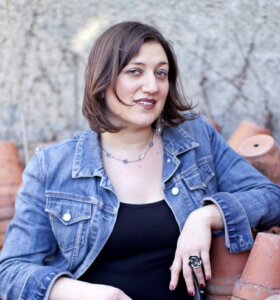A treasure trove of manuscripts sheds light on the history of Jews in Yemen
The National Library of Israel has acquired the world’s largest collection of Yemenite Jewish manuscripts

A collection of Shalom Shabazi’s poetry is part of the newly acquired collection at the National Library of Israel. Courtesy of the National Library of Israel
A rare copy of Maimonides in Judeo-Yemenite — the Jewish version of Yemenite Arabic — is among the treasures in the world’s largest collection of Yemenite Jewish manuscripts, recently donated to the National Library of Israel. Highlights include Judeo-Yemenite copies of works by Rabbi Yihya Saleh, known as the Maharitz, as well as antique ketubot (marriage contracts) that offer a window into a community.
This is a collection powered by one man’s overriding passion for his heritage. Yehuda Levi Nahum (1915-1998) was born in Sana’a, Yemen, and, at age 14 in 1929, came to Israel, where he lived first in Jerusalem, then later in Tel Aviv. Known as “Yuda,” Nahum made his living as a butcher, but spent most of his time outside work collecting Yemenite manuscripts, from ancient to modern.
For years, Israel’s presidents and other luminaries visited Nahum at his home in Holon to see his incredible array of documents on the Jews of Yemen. Now, the public will be able to view these treasures in person, and many have already been digitized.
Jews lived in many parts of Yemen. In the early 1950s, a survey conducted by S.D. Goitein in Israel “showed that the Jews of Yemen come from more than a thousand different localities,” according to Ori Shachmon in Tēmōnit: The Jewish Varieties of Yemenite Arabic.

The language of the Yemeni community is fascinating as well.
“The dialects these Jews use are typologically similar to the Muslim vernaculars of the same areas, yet, in certain cases, linguistic differences — ranging from the subtle to the more prominent — exist between the speech of Jews and Muslims,” Shachmon, who teaches Judeo-Yemenite at the Hebrew University in Jerusalem, said.
The 60,000 Yemenite Jewish manuscripts and fragments were donated by the family of the late Nahum on Jan. 18, which was also the 9th of Shevat, 5784. The Hebrew date matters because it is the anniversary of the death of the important 17th-century Yemenite poet and rabbi Shalom Shabazi. In Tel Aviv, Shabazi is also memorialized with a street name.
A large portion of the donated treasures are fragments.
According to the library, “The collection consists of some 45,000 manuscripts and legible fragments; and some 15,000 fragments extracted from book covers or removed from genizot. About 70% of the collection was scanned and added to the Friedberg Genizah Project (FGP) digital preservation project, which is a partner, together with NLI, in KTIV: The International Collection of Digitized Hebrew Manuscripts.”

One fascinating aspect of this collection is that its sources are both Yemen and Israel. Yuda Nahum started off with manuscripts his parents sent him from Yemen, after he became interested in documenting his heritage. But later, after his parents — along with nearly all the Jews of Yemen — immigrated to Israel in 1949, Nahum kept collecting. He visited Yemenite Jews in the ma’abarot (immigrant and refugee absorption camps), as well as the towns where they eventually settled. He painstakingly took apart book bindings to extract valuable fragments.
During his lifetime, Nahum published some of the documents in books that changed scholars’ views of Yemenite Jewry. “This important collection is a transformative addition to the Library’s documentation of Yemenite-Jewish heritage that will enrich scholarship in this field for years to come,” said Chaim Neria, a curator at the National Library of Israel.
The library, which has an incredible collection of materials on the Jewish people, already has a significant collection of materials on Yemenite Jewry, including an autographed manuscript of Shalom Shabazi’s poetry collection (diwan); a Judeo-Yemenite copy of Maimonides’ Mishneh Torah; a 14th-century Maimonides commentary on the Mishnah copied in Yemen in Judeo-Yemenite; passages from the Book of Numbers in Yemenite script, circa 1050-1150, as well as many other antique manuscripts, sacred books, works of poetry, literature, artworks, recordings of interviews, testimonies, prayers, and songs, as well as rare images of isolated communities.
“Nowadays, there are practically no Jews living in Yemen,” Shachmon writes in her seminal study of Judeo-Yemenite. “Most of them left Yemen for Israel in the 1950s, 1960s, and mid-1990s, and others can be found in Europe and in the USA. In Israel, the Yemenis have been more or less integrated into society as a whole, and they all use Israeli Hebrew for daily communication. Thus, similar to other immigrant languages, the Jewish varieties of Yemeni Arabic are gradually dying out, and the task of documenting them is not only necessary, but also urgent.”
This gift to the National Library will help scholars in their urgent task, and it will provide second-, third-, and fourth-generation Yemeni Jews with direct access to the treasures of their heritage.





















